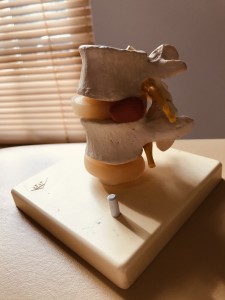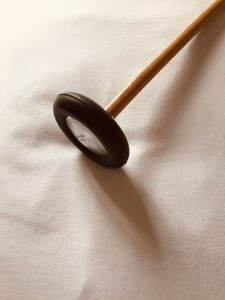 Common golfing injuries and how to avoid them.
Common golfing injuries and how to avoid them.
Low Back Pain
Low back pain is the most common golf injury. The repetitive action of the golf swing is the number one cause of low back pain in golfers, so golf swing faults should be corrected by a professional. A ‘Reverse Angle’ swing fault is a common cause of back pain that occurs when the spine deviates from the vertical during the swing.
Numerous structures of the lower back can be affected – the discs, ligaments, muscles or facet joints.
In order to prevent low back pain research has shown that specific back exercises, such as core strength and stability exercises, can be effective in the prevention of low back pain.
Golfers Elbow
Golfer’s elbow is inflammation of the tendons of the forearm at the point where they insert into upper arm bone. This inflammation is caused by forceful gripping activities such as when gripping the golf club.
Golfer’s elbow causes pain when the inner part of the elbow (Medial Epicondyle) is touched, and also if the elbow is straight and the hand is moved forward and back at the wrist. Typically the pain is made worse by gripping activities and in some cases simple things like picking up a bag or briefcase can cause intense pain.
Gripping the golf club too hard can bring on the Golfer’s Elbow pain. If you play golf for the first time in a long while make sure that you regularly stretch the muscles which work over the wrist by doing ‘limp-wrist’ and ‘policeman halting traffic’ type stretches.
Many people get symptomatic relief from Golfer’s Elbow by wearing a golfer’s elbow strap. Elbow Straps work by preventing the wrist extensor muscles from contracting fully, thus reducing the strain on the tendons at the elbow. This reduces elbow pain.
Plantar Fasciitis
Plantar Fasciitis is inflammation of the Plantar fascia (a fibrous sheath under the sole of the foot), at its attachment to the heel bone. It is a common cause of heel pain in golfers that typically comes on when walking round the golf course. Plantar Fasciitis is particularly prevalent in those golfers with poor foot wear. Pain is common on the underside of the heel and the sole of the foot. A common sign of Plantar Fasciitis is heel pain upon waking in the morning when taking the first steps of the day. Inappropriate footwear plays a major role in the development of Plantar Fasciitis. Golf shoes that have a lack of support for the sole of the foot are the biggest culprits, causing foot pain when walking around the course. A lack of support for the arch of the foot can cause excessive pronation (uncontrolled lowering of the arch) that can predispose golfers to Plantar Fasciitis.
Knee Pain
Knee pain is fairly common in golfers. Weight bearing and rotational forces on the knee during the golf swing, in addition to prolonged walking can aggravate existing knee injuries and lead to knee pain, particularly in the leading knee. Often the original knee injury is sustained doing a different activity or sport, but later in life golf becomes the activity that causes knee swelling and pain. Previous injuries to the meniscus (cartilage) or cruciate ligaments can predispose the knee joint to Arthritis that can flare up due to the stresses placed on the knee during golf.
Pain in the knee joint can lead to weakness of the Quadriceps (thigh) muscles. This leads to a vicious circle of further knee joint instability and more pain, leading to more inhibition and muscle weakness. Exercises to maintain Quadriceps and Hamstring muscle strength are encouraged to provide support for the affected joint. This strengthening should be done under the supervision of a Chartered Physiotherapist.
Gel cushion insoles in golf shoes can reduce the stress on the knees during golf. This can help to prevent knee pain symptoms and provide a more comfortable round of golf.
Shoulder Pain
Shoulder pain can occur in golfers due to damage to the Rotator Cuff muscles. The Rotator Cuff muscles (Subscapularis, Supraspinatus, Infraspinatus and Teres Minor) are small muscles situated around the shoulder joint, which can become damaged during the repeated stresses of the golf swing, particularly if there is a swing fault such as ‘Chicken Winging’ (bent elbows at ball contact) or a ‘C-Shaped Posture’ (rounded lower back) that can put too much stress on the shoulders.
Rotator Cuff injuries usually begin as inflammation (Tendonitis) caused by small but repeated irritation. If the cause of the inflammation is not addressed, and continues over a long period of time, partial tears may develop in the cuff that could eventually become a tear all the way through one or more of the Rotator Cuff muscles.
Golfers have to ensure they maintain flexibility, strength and endurance of the shoulder muscles. Shoulder stabilisation exercises using resistance bands under the supervision of a Chartered Physiotherapist can also help prevent pressure on the Rotator Cuff tendons.
In addition, golf swing technique should be checked by a professional to ensure that the shoulder posture and co-ordination during golf doesn’t overload the Rotator Cuff muscles.
If you have any queries regarding golfing injuries contact us today.

 Common golfing injuries and how to avoid them.
Common golfing injuries and how to avoid them. What physiotherapists do?
What physiotherapists do?



